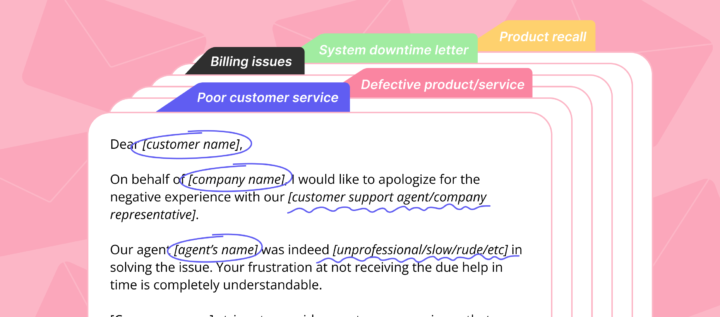Customer Service Philosophy Behind The Success Of 10 World-Known Brands

For a long time at the office, I was sitting side by side with my friend David, a customer support agent. Each time finishing a conversation he said “Come back if you need anything else!”. Neither “Thank you, bye!” nor a generic “Have a nice day”.
I asked him if there was something bigger behind those words or a kind of script. Here is what he answered:
“Have you ever talked to company reps who sound like you distract them from something more important? I did, and that was awful. Saying that phrase to customers I want each of them to feel as people of the first importance to me. It shows that you’re open to continuing conversation if needed.”
Did you get David’s service philosophy? Now imagine that everyone in your customer support team shares this idea. I mean, when each agent provides your customers with the same high-level service.
Cool, isn’t it? A cohesive team guided by a single mission is key to customer happiness. To achieve that, you need to build a strong customer service philosophy.
Of course, that’s not an overnight thing to do. In this article, you’ll find the best customer service philosophy examples and a step-by-step guide on how to create your own one.
Find its template at the end of the article 👇🏻
Strong philosophy as a key to everything we call Great customer service
An investigation of the truths and principles of being, knowledge, or conduct. This is what we usually mean by “philosophy”. Speaking about customer service, it is everything that touches a customer. So let’s make things clear.
Customer service philosophy is a set of well-defined company values and priorities that guide your team while managing service and support issues.
Sometimes it’s unwritten, sometimes — a document, sometimes — graffiti or a poster on the office walls. The key thing is that everyone in the support and sales teams knows and follows this guidance.
- Customer service philosophy serves as a team compass to ensure that they meet customer needs under company goals. Clear principles are like a highway leading your team to success, while the optional rules are a footpath that can end in the middle of nowhere.
Thus, when an unexpected situation occurs, service philosophy will guide your support agents to the right solution.
- But its main function is motivation. Service philosophy increases employees’ morale and quality of work. As a result, you have happier customers and managers enjoying their workdays.
Customer service philosophy is a foundation for everything we call Great service:
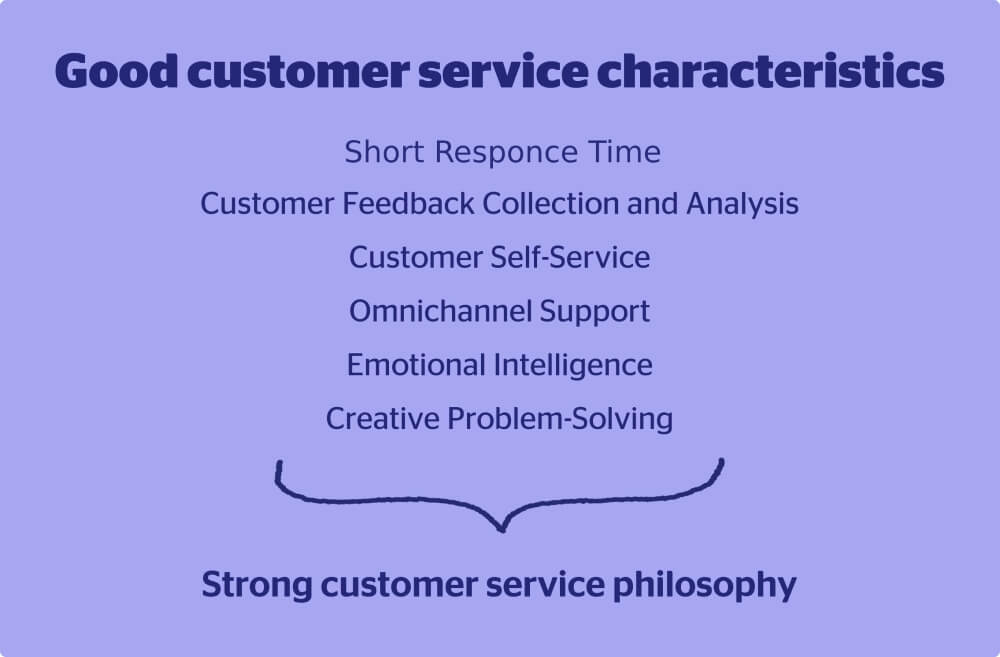
But it’s far more than just a support team.
- While building a product the vast majority focuses on the code or go-to-market strategy. Thus, they build a body. But what about the project soul? With customer service philosophy first, the product is created with your customers’ usability and success in mind.
- Payment issues. Customer service philosophy can outline your company’s billing approach. A prominent example of that can be Papephone’s network operator refund policy. The deep investigation of reasons is the last thing they do when customers complain about some issues. The first one is a refund.
- Marketing can use customer service philosophy while shaping brand messaging and positioning.
The philosophy of customer service brings a higher purpose to the work of the customer service agent. Thus, it has a list of common commandments.
5 commandments of a strong customer service
“Be helpful” is the usual rule for every customer service. But it’s too generic, isn’t it?
There are 5 must-have rules at the core of each brand interaction with customers:
- Be available. It is more than 24/7 customer support, it’s about an omnichannel service. Your team should be ready to answer a customer request at any time on any channel.
- Respect your customers when they are right as well as when they are wrong.
- Don’t lie. If you failed ─ apologize, if you can’t answer ─ take some time for research.
- Show empathy. Let your customers know that you care. That can be simple words like “I’ve been there.” “I understand how frustrating it can be” “We are really sorry to hear that”.
- Apologize. That’s clear, just don’t forget to use “Please, accept our apology for such a bad experience”, “I’m sorry”.
Of course, that’s only a part of what has brought the next brand’s glory of the best customer services.
The best examples of customer service philosophy to inspire you
Yes, the majority of principles are common. But the devil is in the details. And we’ve found it?
DISNEY’s focus on emotional connection with a customer

Like the others on this list, this giant’s mission is customer happiness. But there is something special making Disney one of the best sources of customer service philosophy inspiration.
Willing to provide high-quality service at every stage of the customer journey, Disney seeks an emotional connection with every guest.
How? With the help of strong company values and team members’ training.
Customer experience is more valuable than the price paid ─ aren’t empty words. Walt Disney defined the coordination of employees’ efforts around this goal as a priority.
Well-being, entertainment, reliability, security, and comfort
are 5 pillars of the Disney customer service philosophy
To create a magical environment for great guests’ experience, the Disneyland team adheres to the next rules:
- They are always “on the stage”. During working hours employees have to express happiness, desire to help, and cheerful attitude to the park guests. They even have special mirrors on the doors to check their smiles entering the park.
- Each guest is special. For example, speaking to every little girl that visits Disney cast members call her “princess”. If she drops just bought Dole Whip a few feet away in the shop, the Disney employee will replace it with a new one. Everything to make guests feel special and happy.
- To support the magic atmosphere, employees should repeat their characters in detail. For example, since the majority of Disney characters are well-mannered the theme park staff is forbidden to point with a finger.
- Proud of work. There is a story of a Disneyland builder, who thought that he was just “laying bricks.” But that was wrong. Walt Disney explained, “No. You are building a castle.”
Sounds inspiring, heh?
Whatever you do, do it well. Do it so well that when people see you do it, they will want to come back and see you do it again, and they will want to bring others and show them how well you do what you do.
VIRGIN’s staff priority
This multinational venture capital conglomerate offers products and services in almost every industry. But this is far the only reason for listing here. The company provides an exceptional experience to its customers and employees. No wonder it’s the official mission of the brand.
The philosophy of Virgin’s customer service is fueled by clear company values:
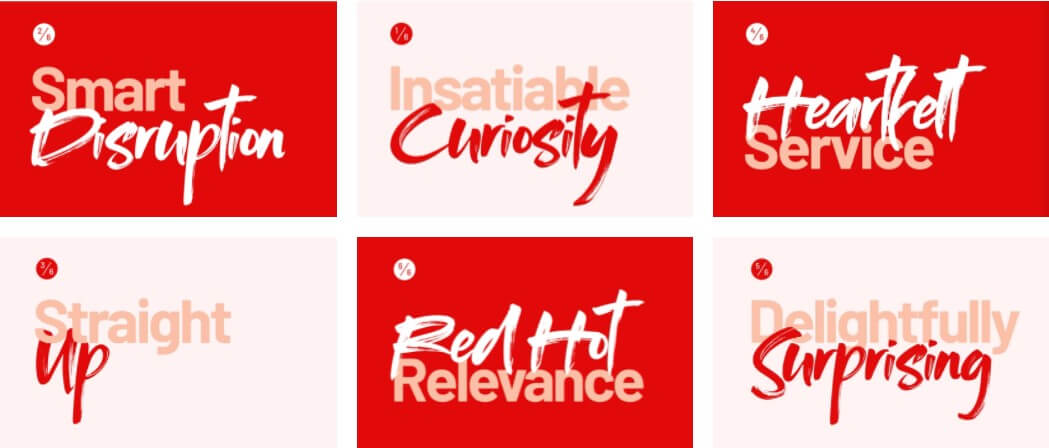
And here is an old visualization version:
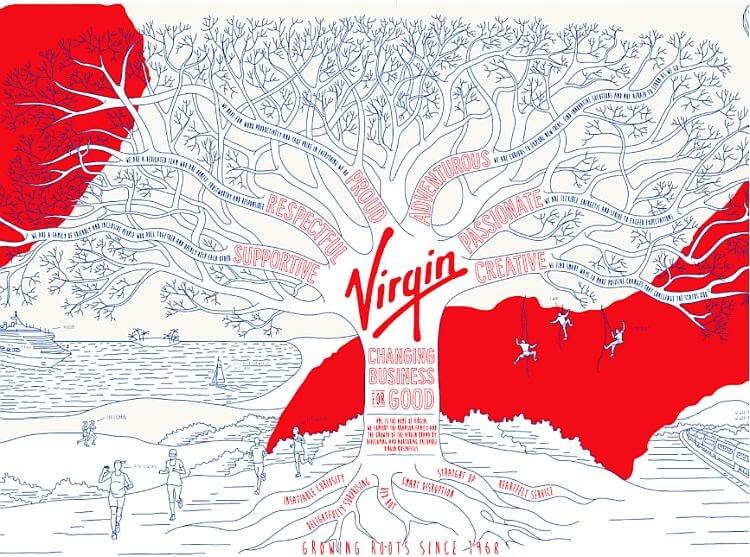
To make them true, the Virgin CEO, Richard Branson has set the next priorities:
- Company staff
- Customers
- Shareholders
Why? When your employees are 100% satisfied with their job and proud of the brand, they will be happier. It means a better mood and the quality of the job they do. Happy employees ─ happy customers.
…if you can put staff first, your customer second, and shareholders third, effectively, in the end, the shareholders do well, the customers do better, and yourself are happy.
The “WOW!” philosophy of the Zappos customer service
An online shoe and clothing retail heavyweight. But neither production nor prices were the thing that brought Zappos a strong reputation and $1 billion in sales.
The secret of brand success is the outlandish work of its customer service department. Zappos has proclaimed “To live and deliver ‘WOW! '” customer approach as its main purpose since far 1999. It turns into a list of customer service philosophy principles they confess. You can find it on the Zappos website:
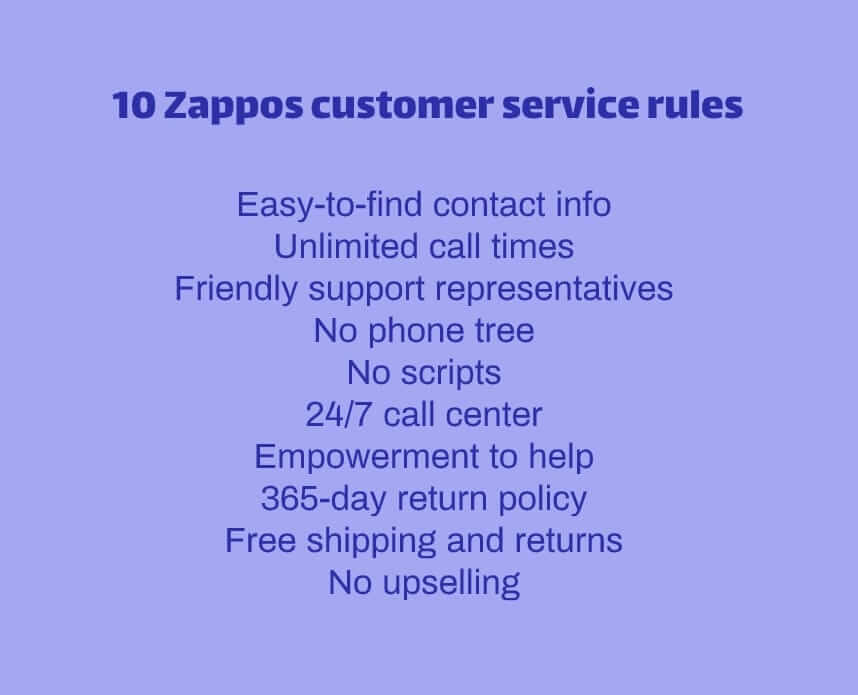
The most interesting thing is that employees don’t have strict guidelines on how to use them while interacting with customers.
We just ask our reps to do whatever they feel is the right thing to do for the customer and the company.
It works perfectly and brings Zappos $2 billion in revenue steadily.
Nordstrom “customer always comes first” philosophy
The US and Canada luxury retail stores where a customer can find everything from fashionable outfits to restaurants and spas to have a break. They offer multiple services to please their most valuable asset ─ customers.
Nordstrom’s company philosophy says:
To provide an exceptional customer experience while shopping they offer a list of special services: coffee shops, restaurants, spa, personal stylists for in-shop visitors, and free returns and shipping for online customers.
Nordstrom is focused on maintaining a long-lasting relationship with customers. The core of their big plan is strong company values.
There are 2 pillars of their customer service philosophy:
- Support those who support you: customers, manufacturers, employees. Nordstrom works hard to create an atmosphere where everyone would feel appreciated, respected, and welcomed.
- Respect the environment. They support “environmental impact” and “reduce of waste” initiatives in fashion.
The customer-first approach by Amazon
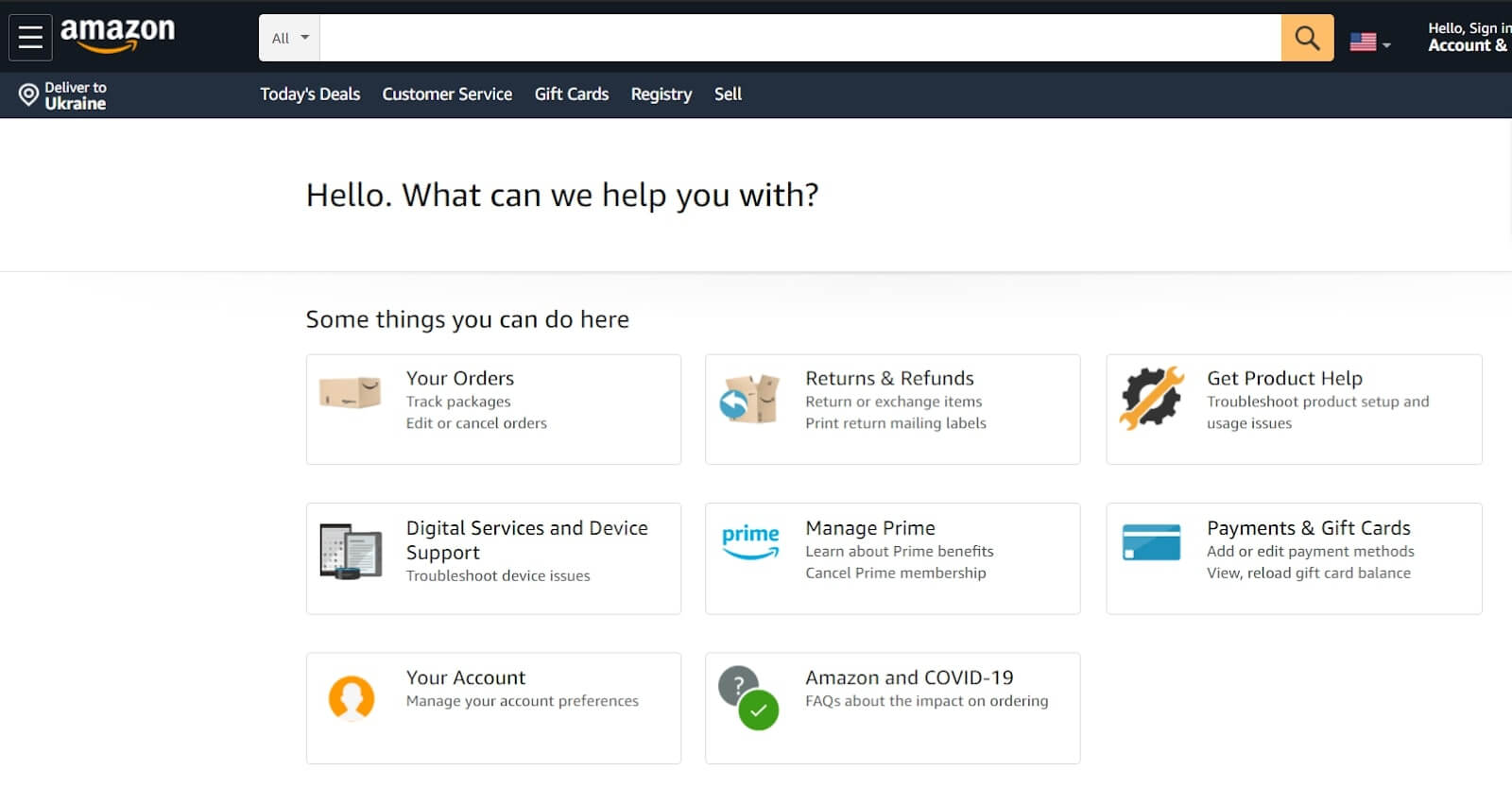
Since 1995, when it was founded, Amazon follows the same customer mission:
To be Earth’s most customer-centric company, where customers can find and discover anything they might want to buy online, and endeavors to offer its customers the lowest possible prices.
They succeed in it with the help of great customer service quality. There are monthly special training sessions where company employees learn to listen and understand customers.
That was the 1st principle of Amazon’s customer service philosophy.
- “We’re customer-obsessed” is the second one. So, every update at Amazon is triggered by the customers’ needs. Each meeting they have an empty chair in the room — the customer’s one. So every decision is taken with the customer first in mind.
- They work to provide 100% happiness to their customers. Even a 99.9% result isn’t satisfactory. This principle is reflected in the work of their customer service team as well.
- No matter how abusive the customers are, Amazon respects them. They always give thanks and never fail to respond.
- They aren’t afraid to apologize.
Trader Joe’s customer service philosophy
The chain of grocery stores guarantee says:
We tried it! We liked it! If you don’t, bring it back for a full refund, no questions asked.
Inspires trust, isn’t it? Thus, the company establishes a personal relationship with a customer.
TJ works to support an image of a neighborhood store. There you’ll find excellent quality products, a warm atmosphere, and friendly staff. The last ones are those who turn obligatory grocery shopping into an exotic experience you want to repeat.

As you see the check-out stands at Trader Joe’s store differ from the ones we used to.
For example, there are no code scanners on the check-out. They didn’t want to break the unique shopping atmosphere and cashier/customer conversation by that ping sound.
This works and inspires?
Chick-fil-A’s focus on employees
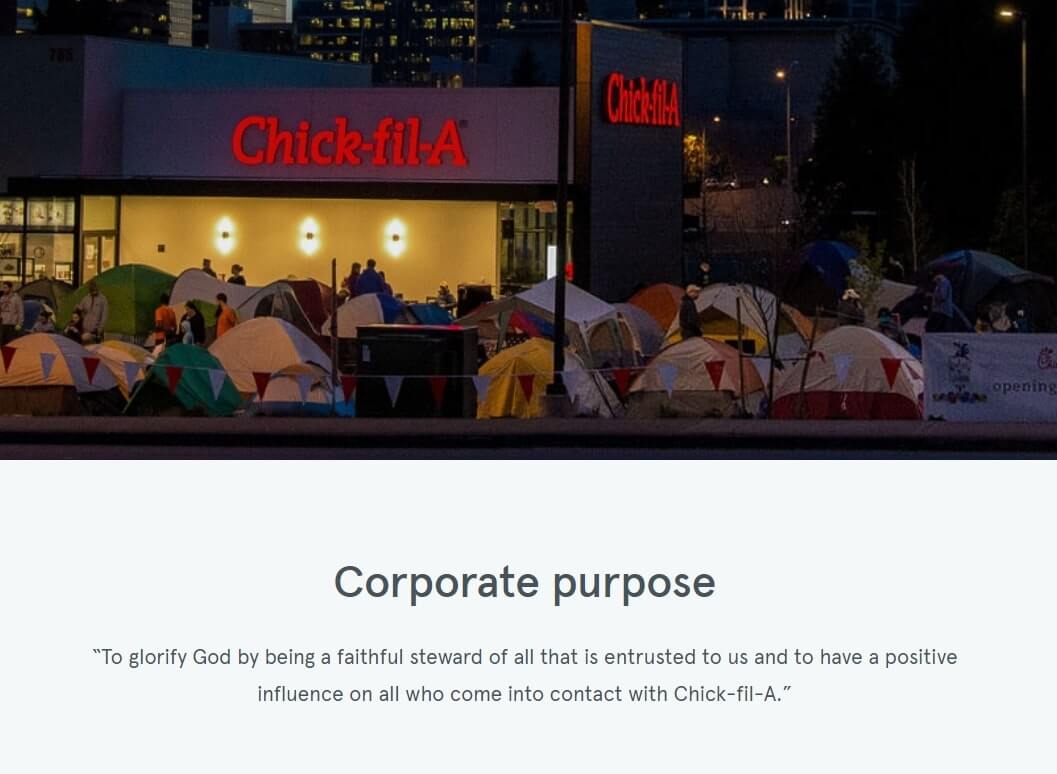
The king of fast-food customer service. Neither McDonald’s nor Starbucks. Why? Because Chick-fil-A is more than just selling a fried chicken. Thus, its Area Marketing Director Kimberly Carlson said:
We should be a part of our customers’ lives and the communities we serve.
That reflects in:
- Hospitality of the company employees and consistent cleanliness.
- Good manners. There you’ll hear simple phrases like “my please” in advance to your “thanks”.
- Additional services like “Mom’s Valet” for big families. A customer can order a served table ahead to prevent the kids’ chaos.
The Chick-fil-A’s customer service philosophy considers employees’ independence. That’s not a problem because they know the company’s mission and follow it.
Wegmans “helping you live a healthier, better life through food” philosophy
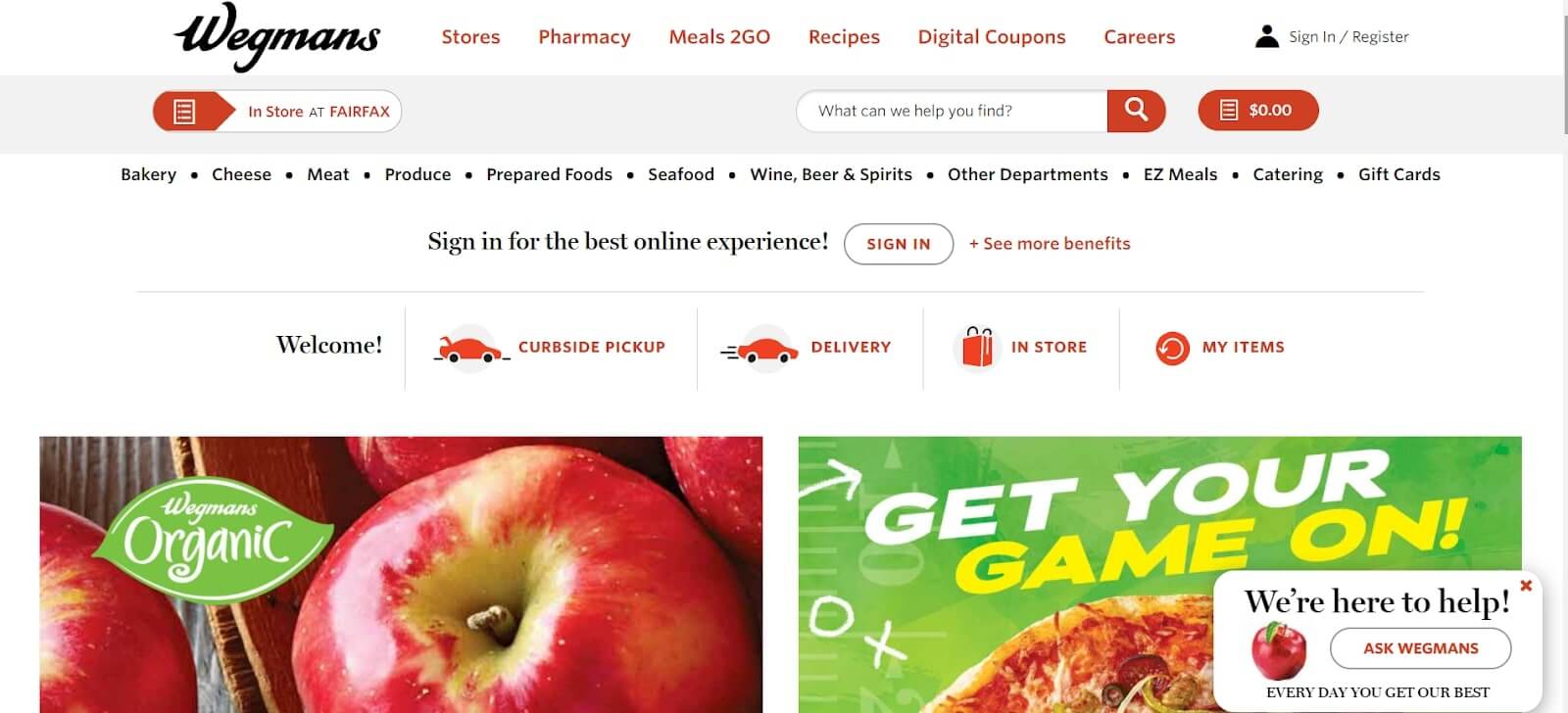
It’s another b2c example of exceptional customer service from an American supermarket chain. Offering organic food, they follow a great mission “to help people live healthily”. Wegmans not only sells high-quality products but also provides customers with tools like healthy eating guidelines.
Empowered by the “every day you get our best” company principle, the healthy life philosophy has brought this brand 101 new stores. Sounds cool enough to dig deeper.
There are 4 key values behind Wegmans customer service philosophy: caring, community service, respect, empowerment.
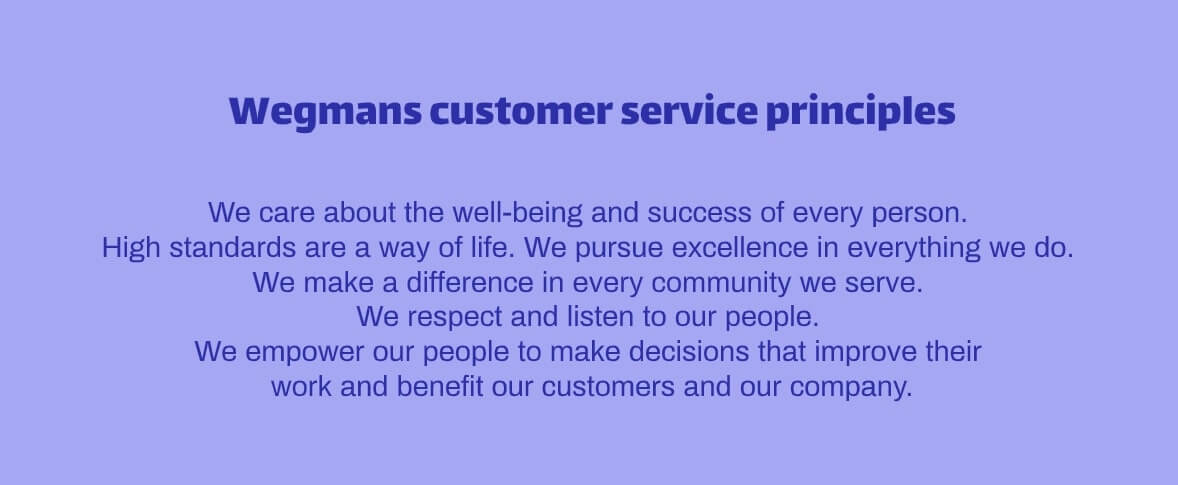
This makes Wegmans more than a usual holistic supermarket. It’s a company that builds healthy relationships with customers and cares about their lives.
But these are all about ready-made examples. What about the in-progress one?
The customer-centric philosophy by Dashly

Since Dashly is quite young, customer philosophy is one of the tasks we are working on currently. Nevertheless, there is great progress to share.
Dashly took the traditional customer-first approach and adopted it to the company mission, JTBD framework, and customer development interview technique.

Due to the specificity of the product, our mission is “to help customers do their job”. It has brought some shift into the hierarchy of traditional customer service principles. I mean, the standard principles of empathy, loyalty, etc are also on our list, but right after the key ones, which we are focused on:
- Honesty. Dashly employees won’t lie to customers if the product can’t satisfy their needs.
Our support agents know full well the measure of company resources: what we can and can’t do.
- Understanding the key objective behind the customer problem. This principle implementation starts with the “To do what?” and “Why?” (our favorites). We ask them while discussing product initiatives as well as while looking for the customer request reason to see the big picture.
- Freedom of choice. We show customers all the possible solutions to their questions.
- Initiative. We take a proactive approach interacting with customers. For example, we prefer to notify about balance in person by a call rather then via email (by prior agreement). The last one can lost in the inbox, that can’t be said about the call notification.
- Comfort. Self-service in the face of a rich knowledge base where Dashly customers can find all the needed instructions.
The goal of Dashly customer service reps is far more than answering a concrete question. We seek to discover and solve the initial problem (job) behind customer request
We wrote about this in the next articles:
- Jobs to be Done or everything you need to know about your users’ desires
- Jobs to be Done. How to implement the framework
Now, when you are inspired, time for the tutorial part! Next, you’ll find a universal guide we follow building the philosophy of Dashly customer service.
How to create your customer service philosophy
After implementing these 6 steps, you can answer the “what is your customer service philosophy?” question with a clear statement:
- Start with your customer needs and company resources
You may have noticed that some principles are too generic. Dashly team is about more concrete things. To avoid false promises, we analyze all the data we have collected during customer interviews, surveys, and focus groups. Thus, we refused the “customer happiness at any cost” idea and focused on the individual approach. Since Dashly is a young team, we have limited resources. Thus, the “honesty” philosophy principle was created. We know our resources, so we don’t promise anything we can’t deliver. - Chose a philosophy model
Yes, there are two things to focus on: a customer or concrete issues. Due to the specifics of our product, we chose the first one. Thus, we take into account both a problem and a customer. For us, it means tracking the history of all customer interactions with Dashly service. It helps to understand customers and dive into the context of a problem.
Issue-centric philosophy is about concrete problems that customer support faces daily without the context of previous interactions. - Prioritize the channels to support your customers
How do your customers prefer to communicate with a brand? Someone likes to be informed personally via a call, others via email, or on socials. In terms of multichannel support, it’s about the priorities of the market and response time.
To implement it, we use one inbox technology for chat, email, messengers, and social networks communications.

- Manage customer expectations via service options. Thus, Dashly offers omnichannel support, no upselling attempts, a knowledge base for customer self-service, automation via chatbot, and an onboarding email sequence.
It can be product guarantee, 24/7 live chat, no upselling attempts in interactions with support reps., free shipping, etc.
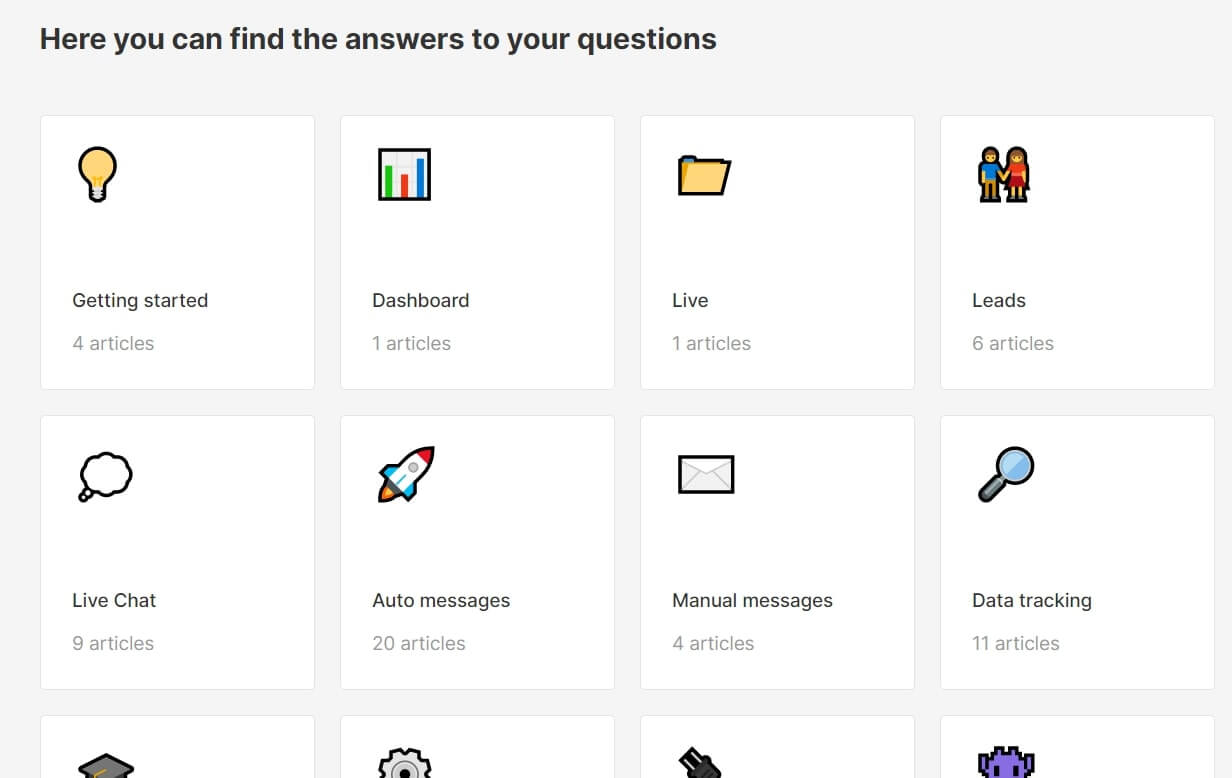
- Work on the customer service image
It means a consistency of tone of voice, designs you use in communication with a customer. For example, whether you email or chat with our support agents, you’ll notice the same friendly tone, images, and desire to help. - Create and share your customer service philosophy statement
At this stage, you have clear principles of how your employees should interact with customers. Time to summarize them in a short statement.
This is a part we are currently working on. So here is a template to get you started:
Clear service philosophy gives you +1 competitive advantage because:
7 in 10 U.S. consumers say they’re willing to spend more money if it means buying from a business that offers great customer service.
- If you want your customer service philosophy to work for a company, deliver it to your employees and customers. How?
Publish it on a website, mention the statement elements in your marketing campaigns, share by word of mouth.
As a result, 11 people can hear about how great your service is from each customer you’ve made happy.
The final step is to integrate your philosophy into a company workflow by training your team.
This is the plan we follow. Hope it will inspire you to get started. In addition to this detailed instruction, we offer you a great customer service tool for its implementation.










